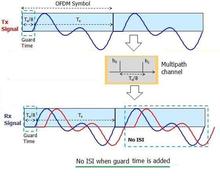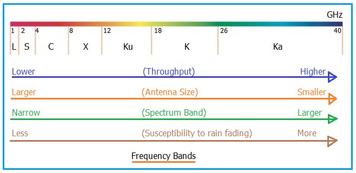
Hybrid Beamforming: Advantages and Disadvantages
Explore the pros and cons of hybrid beamforming, a technique combining analog and digital beamforming for enhanced coverage and flexibility in wireless communication systems.
Showing 20 posts (Page 7 of 22)
Advertisement

Explore the pros and cons of hybrid beamforming, a technique combining analog and digital beamforming for enhanced coverage and flexibility in wireless communication systems.
Learn the basics of White-Fi (IEEE 802.11af), its features, physical layer, and benefits for extended Wi-Fi coverage using TV white spaces.

Explore IEEE 802.11p (WAVE/DSRC), the standard for vehicular communication. Learn about its features, frequency spectrum, and protocol stack for V2V and V2I applications.

Explore the key differences between in-band and out-band jamming in RF systems, including causes, mitigation strategies, and relevant use cases.

Explore infrared (IR) communication basics, including features, network operation, spectrum, advantages, and disadvantages.

Explore the workings of infrared (IR) sensors, their components (transmitter/receiver), and diverse applications from military to environmental monitoring.

Explore the differences between Intelligent Reflecting Surfaces (IRS) and Backscatter technology, including operating mechanisms, duplex capabilities, and hardware costs.

Explore the methods for interfacing the Physical (PHY) and Medium Access Control (MAC) layers in wireless communication systems like WLAN, WiMAX, and LTE. Learn about data transmission and control interfaces.
Learn about WiMAX Advanced (IEEE 802.16m), the successor to Mobile WiMAX, featuring enhanced data rates, mobility, and advanced antenna technologies.

Explore the pros and cons of Inverted-F Antennas, including benefits like compact size and drawbacks such as narrow bandwidth. Understand the trade-offs of this antenna type.

Explore the 7 layers of the IoT protocol stack, from the sensor layer to the application layer, and understand the function of each in IoT communication.

A guide to selecting the right IrDA transceiver, covering key specifications like data rate, voltage, range, and manufacturers to consider for your application.

Explains the differences between Inter Symbol Interference (ISI) and Inter Carrier Interference (ICI), focusing on their causes and mitigation techniques in OFDM systems.

A comparison of the advantages and disadvantages of L, S, C, X, Ku, K, and Ka frequency bands, providing a guide for understanding the trade-offs of each band.
Explore job opportunities related to L2/L3 protocols, including required skills, top companies, and expected salary ranges in the wireless communication and embedded systems industries.
Explore the distinctions between LDACS1 and LDACS2, focusing on modulation, duplexing, capacity, and frequency. Understand the core differences between these aeronautical communication systems.
Explore the top 5G modem chipset manufacturers like Qualcomm, Samsung, MediaTek, Intel, and Huawei, driving advancements in 5G technology and connectivity.

Understand Level Crossing Rate (LCR) and Average Fade Duration (AFD) in radio propagation. Learn their definitions, formulas, and differences for wireless system design.
Explore the distinctions between licensed and unlicensed frequency bands, including access methods, interference management, advantages, and disadvantages.

Learn the basics of LiFi technology, a wireless communication method using light to transmit data. Discover its features, how it works, and its advantages over WiFi.
Advertisement